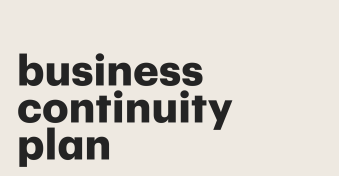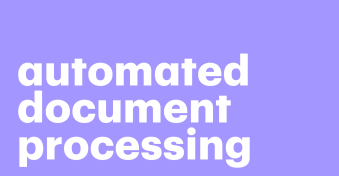Document archiving is the process of securely storing important information you don’t use regularly in a separate system.
This way, the data is deleted from your actual database, reducing the load, and you can retrieve it when needed.
In this article, we’ll cover how the document archiving process works and show you tools to facilitate efficient storage and fast retrieval of all your historical documentation.
Key takeaways
- Archiving is the process of storing records and documents in a secure and organized manner for long-term preservation and future access. It requires identifying and organizing what needs to be stored, choosing the right format for storage, and selecting an archiving solution.
- By automatically tagging and classifying the archived documents with access controls, you simplify and secure the search and retrieval of historical records.
- You can store archived documents on-premises or opt for modern data storage solutions that facilitate seamless search and document import.
- Underpinned by benefits like enhanced security, efficiency, and ease of legal compliance, digital document archiving with a third-party document management solution outperforms implementing off-the-shelf solutions like Google Drive or Dropbox.
What is the best way to archive documents
Digitally archiving documents is best. There are two main methods of conserving inactive documents — physical and digital.
As physical archiving is becoming obsolete due to its paper-based nature, let’s focus on digital.
This type of archiving is preferred by many companies because it’s fast, secure, and doesn’t require extra tech-savviness with respect to information retrieval and transmission.
You can use some off-the-shelf options like Google Drive and Dropbox, or implement a solid document management system with more advanced functionality.
| Google Drive / Dropbox | Document management system | |
|---|---|---|
| Security | Moderate | High |
| Analytics capabilities | Low | High |
| Automation | Low | High |
| Compatibility | Low | High |
| Efficiency | Moderate | High |
| Access control | Low | High |
Document management system benefits
Doc archiving digitization through document management software wins over implementation of other generally available storage options in many aspects:
- Better protection of archives from loss or damage
- Improved cybersecurity of sensitive data due to encryption, access control, and an audit trail
- Full legal compliance with record-keeping regulations
- Fast, on-demand access to archives and enhanced business efficiency through decluttering files
- Creation of historical records for future reference and research
What does the document archiving process look like
Digital document archiving is made easier with advanced document management software.
Here are some common steps this process includes.
Assessment
First, you should clearly understand why you need to archive files and what value you expect to obtain by doing this.
This first stage includes regularly reviewing digital documents and determining which ones are no longer actively used but are still important for legal compliance, future reference, or historical significance.
Selection and classification
Once you’ve defined the documents to be archived, categorize them based on type and importance.
Also, set up retention requirements, i.e., the specific amount of time you need to retain particular documents before total purging.
Preparation
This step includes document digitization, if some documents are still in paper format, as well as removing unnecessary and redundant files so as not to clutter the archives.
Metadata creation
Create or update metadata for each particular document, including parameters like author, title, creation and modification dates, and keywords.
Such steps will help you easily search and retrieve archives in future.
Format standardization
Use non-proprietary, open formats for conversion. For example, for documents it can be PDF/A, for images — PNG or TIFF.
These formats are widely supported and they are unlikely to become obsolete, ensuring long-term accessibility.
Storage
At this final stage, archives are transferred into a digital repository.
We recommend leveraging a third-party business document storage over an in-house one, because this spares you the need for regular maintenance and management.
When choosing the repository pay particular attention to aspects like scalability, security, back-up availability, usability, and accessibility.
How are archived documents retrieved and accessed
Depending on the way you choose to archive docs — on-premises, with a stand-alone document archiving solution, or with a company that specializes in document automation workflows as well as archival storage — the retrieval process differs.
In the first two cases, you navigate the storage space on your own, sticking to company-wide document management rules and access policy.
When relying on document archiving options that work hand-in-glove with dedicated doc management software, the whole process is automated for you.
This third choice is a preferred option for many, as you’ll get access via an online portal to your documents or their copies, bulk downloads, deleting (and restoring) documents, and more.
Besides, archived files must have a clear access policy.
Set up roles and positions about who can work with archives and keep an eye on things through document tracking software.
This digital tool enhances the security of the archived files by controlling who opens, views, and retrieves them.
A document repository for all your archiving needs
PandaDoc offers a sophisticated document repository for managing and storing your most sensitive data.
Here are some features that make choosing PandaDoc for document archiving software stand out from the crowd.
Rock-solid security
Security is ensured through built-in granular access controls and multi-factor authentication.
Advanced audit trail functionality helps monitor what happens to your documents — who views them and who makes unauthorized access attempts.
Powerful collaboration
User-friendly collaboration tools allow multiple users to work on the same documents by tagging each other, viewing feedback, and leaving comments in real time.
Seamless integrations
The platform’s private document archiving solution offers integrations with numerous CRMs and securely integrates with other third-party storage tools like Dropbox, Google Workspace, and Microsoft OneDrive to ensure faster and more efficient document management.
Powerful search
Finding documents and specific sections is made easy with advanced search and filter capabilities.
You can search information by keywords as well as users who have created documents and/or made changes.
Smooth import
Our DocX Converter enables seamless scanning, uploading, and its instant conversion of Word docs into an editable PandaDoc template or document in your format of choice.
Such automation spares you the need to manually reformat tables, images, or fonts when prepping docs for archiving.
Disclaimer
PandaDoc is not a law firm, or a substitute for an attorney or law firm. This page is not intended to and does not provide legal advice. Should you have legal questions on the validity of e-signatures or digital signatures and the enforceability thereof, please consult with an attorney or law firm. Use of PandaDoc services are governed by our Terms of Use and Privacy Policy.


